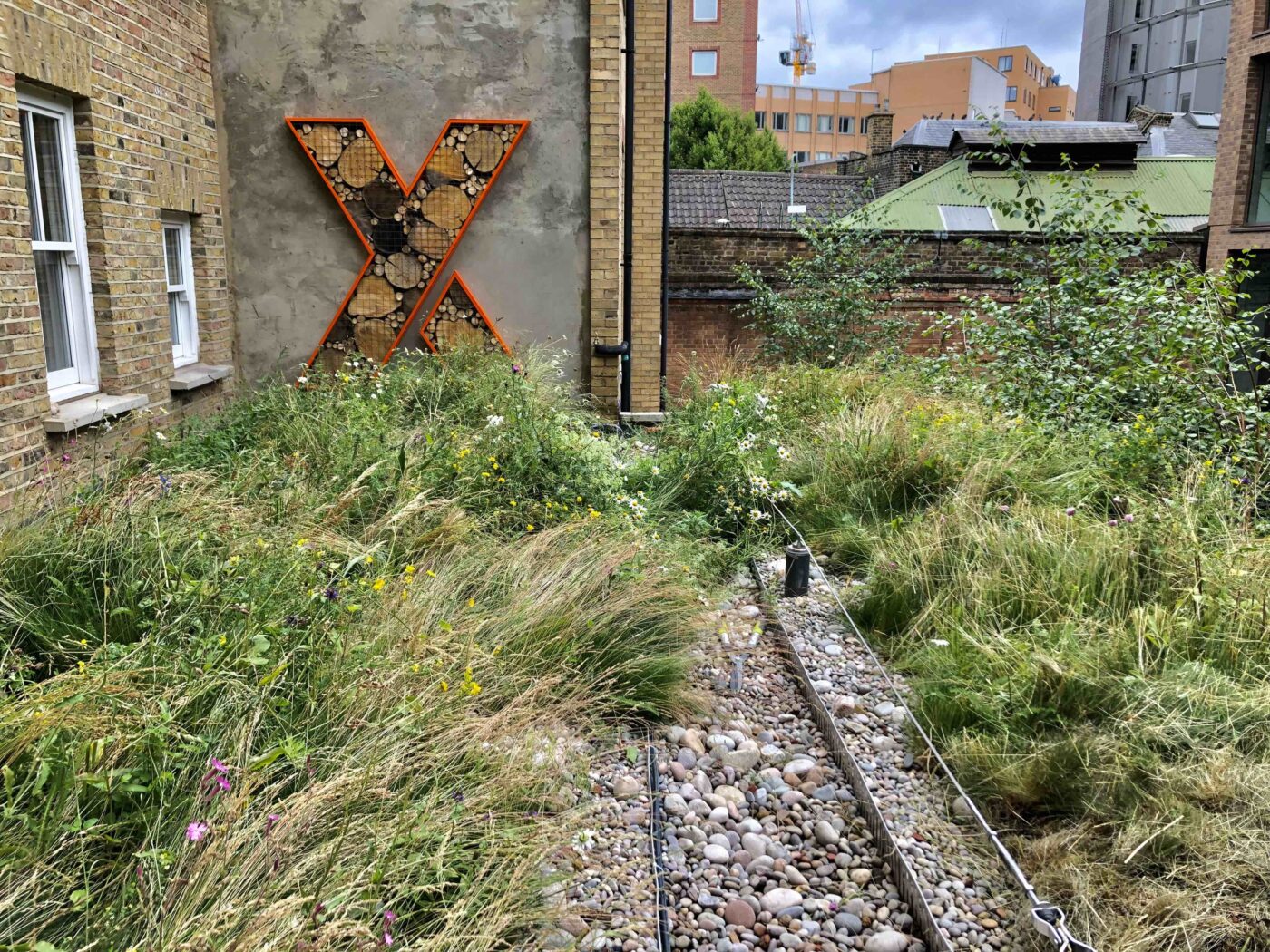Vertical greening
Eschewing the costly install & lifetime maintenance costs of planted plastic modules, our vertical greening includes ground-planted climbing plants with optional integrated placemaking habitat panels that can be formed in any shape and powder coated in any standard RAL shade. One of our favourites is this biophilic bug hotel at X+Why in Whitechapel, which we supplied as a wonderful counterpoint to the revived green roofs in 2020:


Rooftop Habitat Features
With so much pressure on space in our cities, our approach to roofs and walls is based on a deep understanding that, done well, they are one of the best ways to provide space for biodiversity in the urban environment.
When we create good green roofs we do so with the intention to provide meaningful space for invertebrates and pollinators, restoring habitat lost during the long march of urbanisation. So its not just about food sources (the flowers) but also about shelter and basking space for those creatures we hear about so much in the news – bees, moths and butterflies especially.
For this reason we try to incorporate a number of what we call nature hotspots, small additions which give extra visual interest to the roof and make them stepping stones for invertebrates making their way on the wing round our towns and cities.
Sand, stone and log piles
Log piles provide shelter and food for many invertebrates, and create essential habitat for fungi and other soil bacteria that in turn support your roof’s plant communities
Hardwood bee hotels
Oak, birch and sweet chestnut offcuts, bored with holes of different sizes create perfecting nesting sites for bees and other pollinators, as well as slowly feeding the mycelium communities below ground.
Shelter swales
Biomass obtained from our Autumn care visits to our roofs can be fashioned into shelter for overwintering invertebrates. They also form temporary wind breaks that afford fragile seedlings a chance to develop during the harsher months.